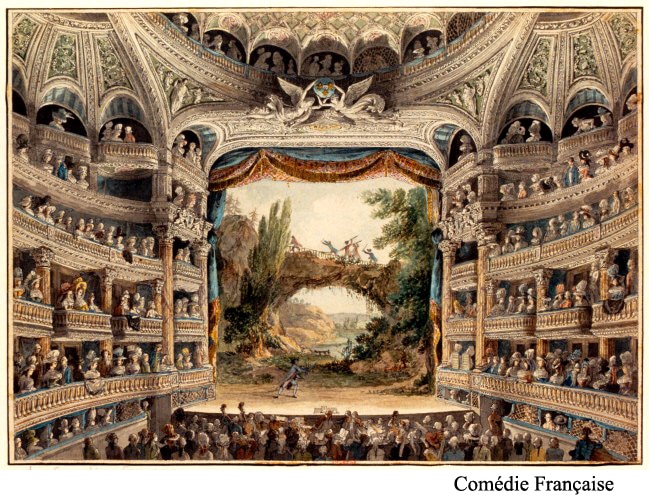|
Olympe de Gouges, when writing her play about slavery, Zamore and Mirza, or the Fortunate Shipwreck, displayed a certain amount of confusion about the geographical setting and the people she depicted. The play is described as an Indian drama. The Action is said to take in the East Indies. The main characters, Zamore and Mirza are described as Indians and another as governor of a Town and a French Colony in India. There are also 'several local indians'. Gouges describes a ballet that is take place at the end of the performance where Indians and soldiers mix, and which is to represent the discovery of America. In a postcript she added to the play, she recommended that the theatrical company 'adopt both the colour and the dress of the Negro.' thereby contradicting apparent claims that her protagonists are either Asian or native Americans. Although the French did colonize India, it is not clear that this is supposed to be the setting of the play. Rather, the West Indies is where the French had slaves. What about East Indies? The French did again colonise Vietnam, then Indochina, but this was not where the slave trade was conducted. On the other hand, the French East India Company had interest in Mauritius and Reunion (Ile de France and Ile de Bourbon), both, in the West Indies. The proximity of the West Indies to America may have led to the idea of a ballet re-enacting the discovery of America. What can we make of such racial ignorance and inept geography? Of course Olympe was largely uneducated. And the anti-slavery movement in France was yet to grow strong enough that many people were aware of the specifics of the slave trade and of the conditions of living in the West Indies. In fact, Gouges was one of those who helped bring the evil of slavery to the attention of the French public, and Brissot, one of the founders of the Club des Amis des Noirs, claimed to be influenced by her play, and offered her a membership to the abolitionist club as soon as it was founded. Olympe was ignorant, but she did not, as an 18th century woman, have much of an opportunity to educate herself by travelling. She was confused, but had good intentions: she felt that by portraying courageous, intelligent and compassionate runaway slaves, she would spread the word about the abuse that was perpetrated and interest the public in helping stop that abuse. Poor education, lack of opportunity, good intentions all sound like the sort of excuses given for every day racism and cultural appropriation. Does it make sense to see in Zamore and Mirza the beginnings of these phenomena? Ballet - at the end of the last act.
0 Comments
Leave a Reply. |
About
This is where I live blog about my new book project, an intellectual biography of three French Revolutionary women philosophers. Categories
All
Archives
November 2022
|

 RSS Feed
RSS Feed